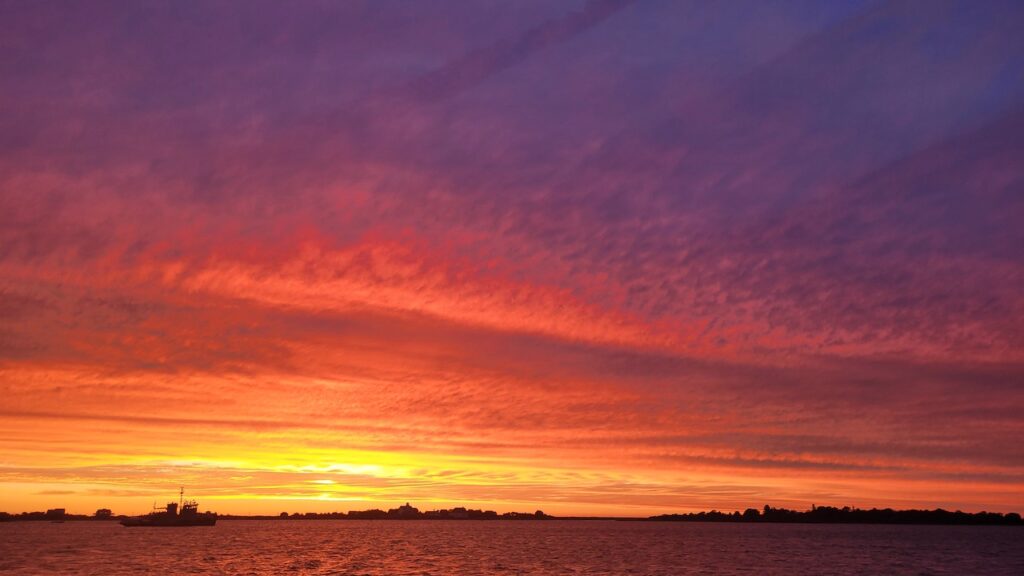Cape Cod, MA USA …
If you spend enough time as a cruising sailor, sooner or later you’ll have to deal with a hurricane or post-tropical cyclone. It’s not like you go looking for trouble, but once in a while trouble comes looking for you. Hurricane Lee spooled up over two weeks ago off the Cape Verdes and headed WNW at a sedate pace at one point going from a Cat 1 to a Cat 5 storm in less than 24 hours, apparently a modern record. If you read the headlines or watched the news it was not a great leap to assume that anyone foolish enough to be anywhere near this behemoth storm in a sailboat was toast.
As sailors we pay close attention to the weather as a matter of course. Wind, waves and storms govern when we leave, where we go and how we get there. Our daily routine has us devouring forecast charts, NOAA reports, grib files and anything else we can pull down from the internet. When at sea our data is more limited and agonizingly slow to arrive but still with patience can render a fairly accurate picture of what to expect. In the case of cyclones, tropical storms, hurricanes and other major weather events our primary goal is to get out of the way or, if that isn’t possible, hole up and prepare for the worst. In 2014 in New Zealand a forecast of a post tropical cyclone had us running to a well-protected bay on the North Island where we hunkered down with lots of anchor scope and cleared decks. In 2019 we found ourselves in Nova Scotia in the cross hairs of Dorian, a major hurricane, and elected to run like a rabbit westward and take refuge far up one of Maine’s many fjord-like inlets. We saw a couple of minutes of rain and a puff of wind.
Our first go-to source of weather information and forecasting this time of year is the National Hurricane Center. The folks at the NHC get paid to be the experts, and it is their six-hour updates about each named storm that find their way into the conventional media, often with sensational distortion. In the case of Lee their projected 500-mile-wide cone of the storm center seven days out just barely touched coastal Massachusetts so the headlines in the morning telecasts and newspapers had Boston the next New Orleans post Katrina.
For our part we elected to stay in Block Island’s well protected interior salt pond with the proviso that if 36 hours out the NHC forecast had any probability of the storm turning back west we would scoot down Long Island Sound and seek refuge elsewhere. When the 36-hour deadline passed with no change in the forecast track we made preparations to ride it out. We set up in the northern extremity of the anchorage where the fetch would be limited and where we would be upwind of any other boats to eliminate the possibility of having someone drag down on us. We cleaned off the decks, double lashed the dinghy and paid out enough chain to give us a six to one scope. We ran the generator to charge the batteries, made enough fresh water to fill the tanks and retired below. For the better part of 48 hours the wind howled but never was more than 40 kts. Nothing broke, Jen finished up a lot of sewing projects and Harl cured some electrical issues. All in all, pretty boring.
So the threat of Lee kept us in Block Island for eight days where we managed to get ashore only twice. We rode bikes out to the northern tip of the island, hiked out to the lighthouse and watched seals frolicking in the surf. We picked up a few supplies at the grocery ($4.00 for a single peach and forget about buying Oreos) and had a milkshake and that was it. So yesterday with the storm off pounding Nova Scotia we motored out the channel and picked up a nice following wind for the sixty-mile run up to the top of Buzzards Bay where we anchored under sail in 22 kts of breeze in Phinney’s Harbor. We’ll get to spend some time with good friends, pick up the latest Amazon shipments of boat supplies and restock the larder before heading for Nantucket later this week.
41 43 N 070 37 W
Phinney’s Harbor, Monument Beach
Cape Cod, MA USA







